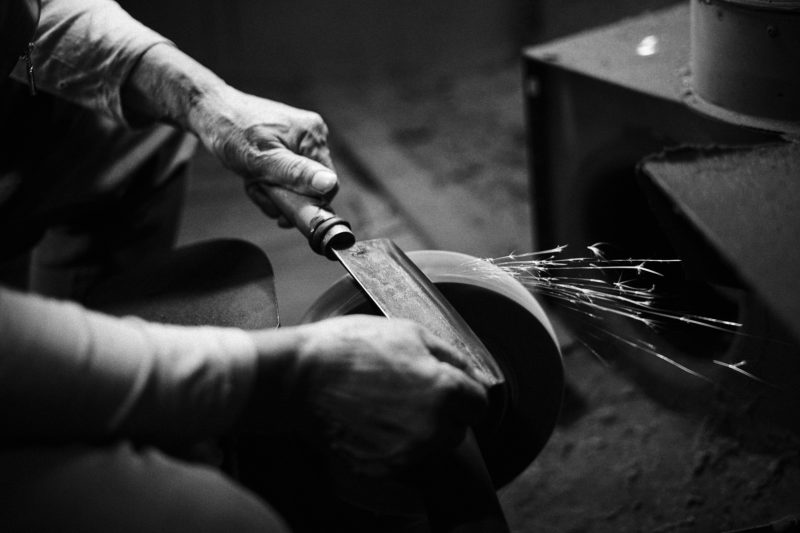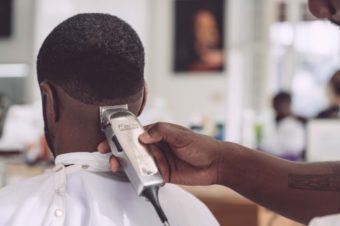After choosing and buying your hair clippers, there is need to take care of them. When hair clipper blades are well taken care of, the lifespan of clipper blades is prolonged and you could take longer before you consider sharpening them. One of the tips to prolonging the life span of your blades is to ensure that your hair is clean and that you have groomed before you clip it. Remember to follow the instructions that come with your blades; it always pays to follow the user manual.

There are some hair clipper blades which come with self-sharpening blades; such require less attention when it comes to clipper blade sharpening. The rest that do not have self sharpening tools may need your attention once they go blunt to sharpen them. In this article we look at just how to sharpen a hair clipper blade.
Knowing whether to sharpen your hair clipper blades
So how do you know that your clipper blades are now blunt and that you may need to go for sharpening them? Well it is quite easy; you have the experience where your clipper is cutting unevenly and you even have to pass a few more strokes over the same surface? If your clipper is pulling hair instead of cutting, then you know it is time to sharpening your hair clipper blades.
Sometimes, you’ll have to make a choice, whether to sharpen your hair clipper blades or go for a replacement. If the most part of your hair clipper blades has been eaten by rust and/or the blade is broken then you may need to go for a replacement. But if the blade has neither of the above features then you go for sharpening.
How to sharpen your hair clipper blades
There are many ways through which you could sharpen your hair clipper blades. We will take a look at three methods of sharpening your hair clipper blades.
1. Using an oil stone
In its simplest form, stones have been used for centuries to sharpen any blades. It could either be a quarried or man-made stone. For the most part, the top surface is often flat and may vary in the level of grades. With time, a lot of improvements have been done on the stones so that they are more effective. They could be diamond plated. Other stones could have steel, resin plate or plastic with a fine diamond grit coating to finish the stone.
The size of the grit is defined by the grade of the grit and will therefore define just how course or smooth the finish will be. How to sharpen your blades on the stone? You rub the blades back and forth on the stone. An oil stone will most likely produce a smoother finish when compared to a grinding wheel but will most likely be similar to the lapping wheel.
2. Using a grinding wheel
A grinding wheel is a wheel that is made of aluminum and has pits and ridges which could be 12-25 inches of diameter. The wheel carries an abrasive which are held in the pits and ridges. The abrasives could be a diamond solution whether wet or dry or it could also be a paste that is made of mixing graded sand and fat.
When the abrasive is applied, the clipper blade is run back and forth on the radius of the grinding wheel. The size of the particles of sand in the paste determines the coarseness of the cut. The grinding wheel often rotates faster than a lapping wheel. This wheel when compared to the oil stone and the lapping wheel is rough.
3. Using a lapping wheel
A lapping wheel is made of cast iron and is very smooth save only for the grooves which are on the radius that help in draining any excess abrasive and carrier. The lapping wheel rotates slowly when compared to the grinding wheel and the finish on the blades is much smoother. The blades are held inside by a jig on the rotating ring. Other designs would have a holding arm or a loose weight to hold your blades for sharpening.
Once held inside the rotating wheel, the blades will rotate on top of the rotating wheel so that they have a double rotation which will ensure even sharpening. The abrasive solution is then applied to the rotating wheel to sharpen and polish the blades depending on the grade used on the lapping wheel.
Depending on the way the two blades are tensioned towards each other, an expert may decide to have the blades concave or flat. Once this is done, you may need to decide whether to carry on tensioning on the blades or even assembling as the case may apply to your blades.



consider you will watch there
very interesting and motivative”